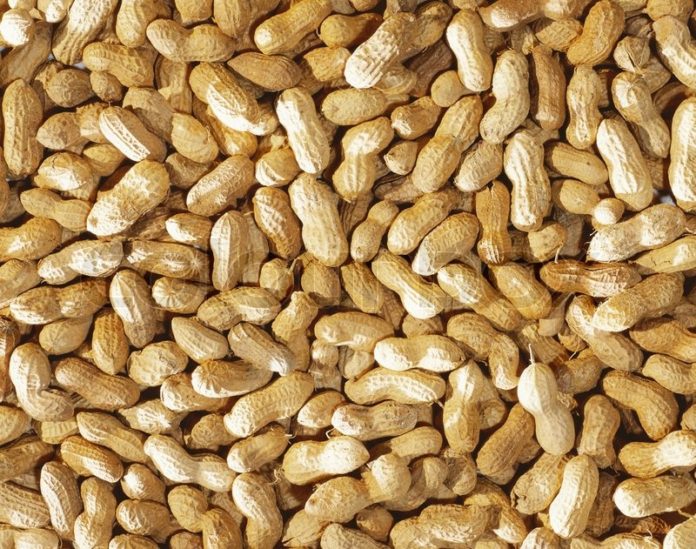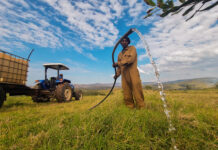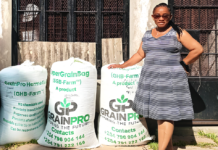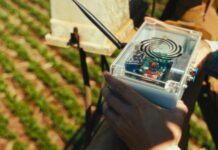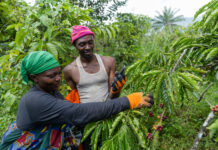Groundnut whose scientific name is Arachis hypogaea L, also known as peanut, is the said to be the second most important legume after beans in Uganda.
Experts say the traditional groundnut varieties are of the red Valencia type, but of a very mixed nature ranging from large seeded to small seeded group such as red beauty. It is mainly grown in Northern and Eastern Uganda and since 1969 26 varieties have been released by scientists from the National Semi-Arid Resources Research Institute NaSARRI) in Serere, Eastern Uganda.
It is early morning as Seeds of Gold approaches the research institute on a fact finding mission and Dr David Kalule Okello the programme leader in charge of groundnut breeding is busy with farmers harvesting groundnuts in the field. He immediately embarks on explaining the background of groundnut breeding in Uganda.
Out of the 26 varieties released so far, 14 of them have been bred by Dr Kalule. The red beauty was released in 1969 and Erudu variety was later released. Farmers are still growing it but the yield is low.
In 2011, Dr Okello released the Serenut series 7-14 but the most preferred by farmers is Serenut 8R, 14R and 9T. There are varieties being bred under field trial to replace Serent8R and 14R. They include Serere groundnut variety SGR 990400 which has relatively bigger seed, the peel shell is soft and can be easily peeled and the yield rate is high 48 percent oil content. It yields 3.5 tonnes per hectare.
The second variety is SGVR 0805 which is being bred to replace the red beauty variety. These varieties are being tested in different districts in different agro ecologies. Theresa Nakajubi a farmer who participated in harvesting the groundnuts appreciates the new varieties saying the seed is slightly bigger than the previous varieties.
Dr Okello contends that all groundnut variety bred and released so far will yield double the old varieties. However there are challenges such as aflatoxin which arises from poor post-harvest handling and pests and diseases.
Groundnuts are highly susceptible to various pests and diseases throughout all stages of growth. Termites, aphids, white grabs and millipedes which attack roots, stem base, leaves and pods can be prevented by either early planting, observe high farm hygiene, conserving natural enemies, timely harvesting and using well decomposed manure.
However, virus diseases such as Rust, Bacteria Wilt and groundnut rosette virus accounts for 80 per cent of groundnut damaged while on farm. Others include leaf spot, crown rot and damping off disease. In order to prevent these devastating diseases, farmers are advised to practice measures such as crop rotation, observe farm hygiene, planting using certified seeds and control pests like vector aphids.
Harvesting
Although average maturity time for most groundnuts is estimated at 100 days, some do mature as early as 90 days while others takes up to 130 days, depending also on climatic conditions. Much care should be observed while harvesting to avoid breaking offs. Seeds should be well dried after shelling to avoid aflatoxin and other post-harvest loses including pests and rot.
Aflasafe
Farmers growing ground nuts are faced with the challenge of aflatoxin a pathogen found in the soils. According Dr Okello, if farmers follow the right soil management practices and post-harvest handling, then they can escape the challenge of aflatoxin but many do not.
“If the pod of groundnuts gets cracked during harvesting, it gives the fungi an entry point and when drying if the right moisture content of 8-12% is not maintained it will lead to the same scenario,” he said.
Therefore, the International Institute of Tropical Agriculture (IITA) and the National Agriculture Research Organisation (Naro) are collaborating to develop Aflasafe for the integrated management of aflatoxin in the maize, sorghum and groundnut value chains in Uganda. Aflasafe is a very effective natural product for minimising aflatoxin contamination.


